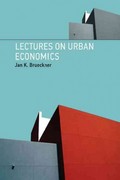Question
Consider a monopolist in a market with linear inverse demand p(q) = 4 q/2. The monopolist's cost function is c(q) = 2q. (1) Write down
Consider a monopolist in a market with linear inverse demand p(q) = 4 q/2. The monopolist's cost function is c(q) = 2q.
(1) Write down the monopolist's profit function. Compute the profit-maximizing quantity and the corresponding price.
(2) Assume that a 2% tax is levied on the monopolist's profits. Does this have any effect on its choices of output level and output price?
(3) Consider now a quantity tax of $1 per output unit sold. Compute the optimal output level and the corresponding output price. How does this tax affect the monopolist's choices of output and price, and its profits?
(Hint: Note that a quantity tax of of $1 per output unit sold is equivalent to raising the marginal cost by $1. Why?)
(4) We say that the monopolist passes on the tax to the consumer if it raises the price by more than the tax ($1 here). Is this the case with the quantity tax in (2)?
Step by Step Solution
There are 3 Steps involved in it
Step: 1

Get Instant Access to Expert-Tailored Solutions
See step-by-step solutions with expert insights and AI powered tools for academic success
Step: 2

Step: 3

Ace Your Homework with AI
Get the answers you need in no time with our AI-driven, step-by-step assistance
Get Started


